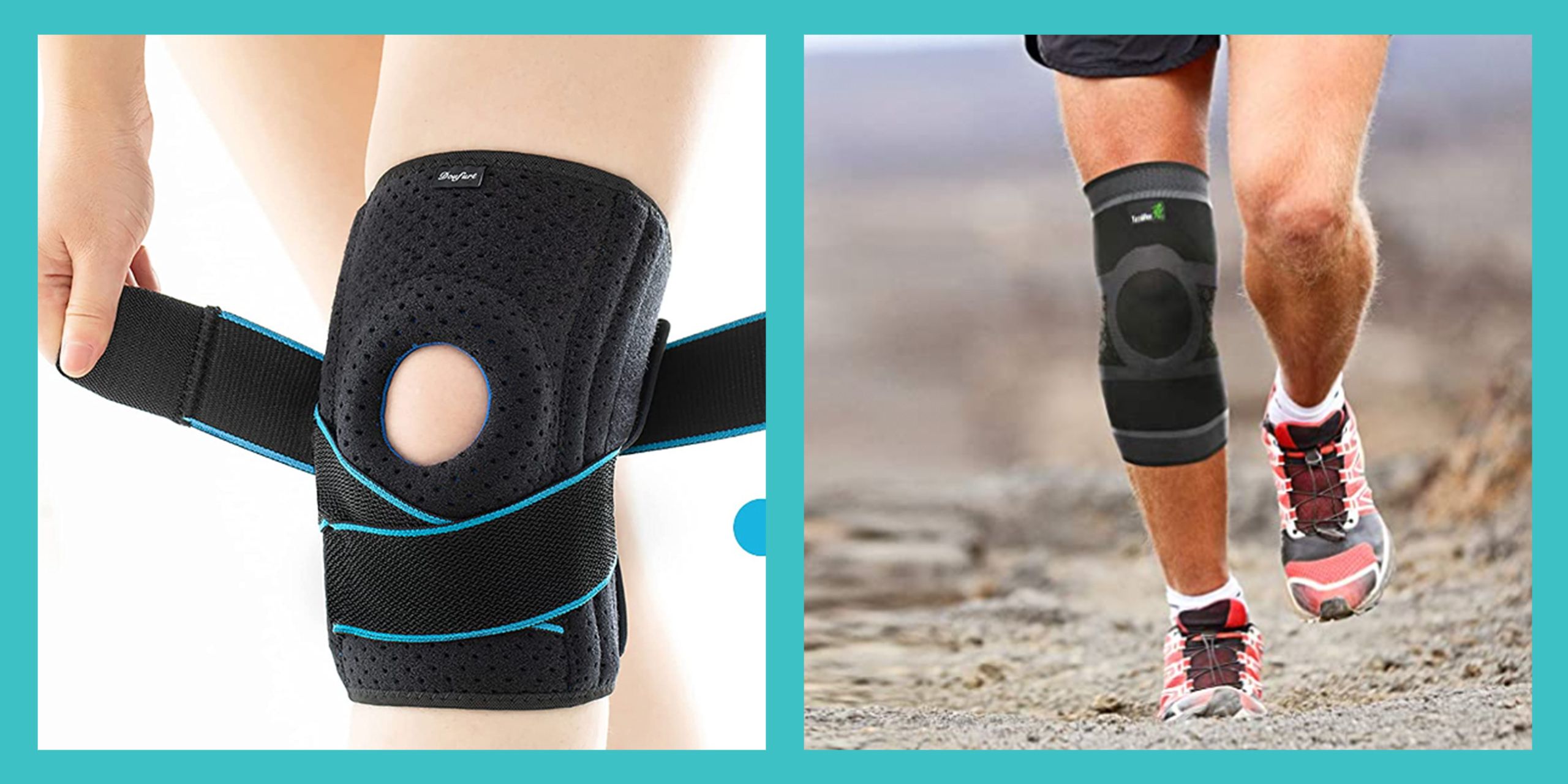In this article, we will be discussing the benefits of using knee braces and how they can help you live a pain-free life. You will learn about the different types of knee braces available, their uses, and how they provide support and stability to the knee joint. Additionally, we will explore the various conditions and injuries that knee braces can effectively treat, allowing you to stay active and mobile. By the end of this article, you will have a better understanding of the role knee braces play in promoting a pain-free and active lifestyle.
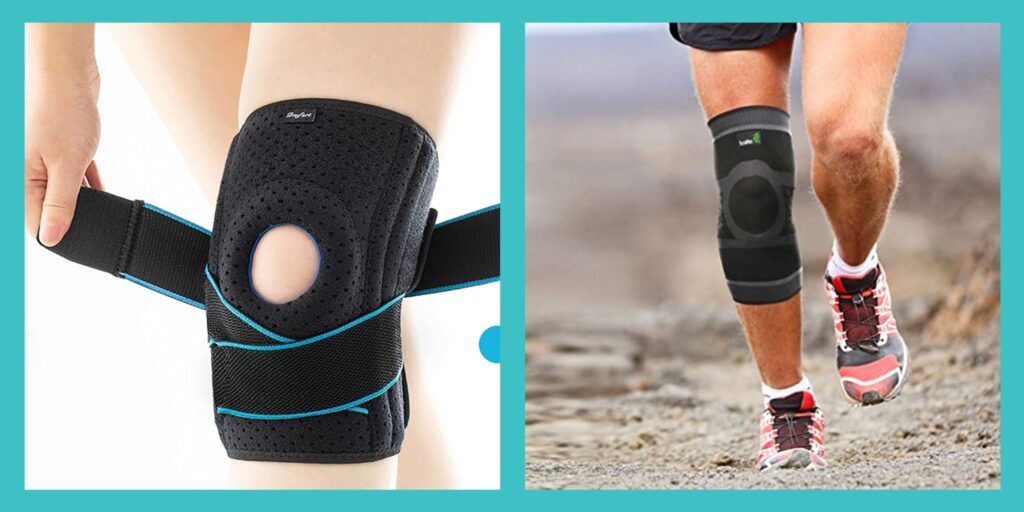
What are Knee Braces?
Knee braces are orthopedic devices specifically designed to provide support and stability to the knee joint. They come in different types and are commonly used for various reasons, including injury prevention, pain relief, post-operative recovery, and rehabilitation. Knee braces can be made of different materials, such as neoprene, elastic, metal, or plastic, and are typically worn around the knee area to enhance the stability and function of the joint.
Different Types of Knee Braces
There are several types of knee braces available in the market, each addressing a specific purpose and providing different levels of support. Some common types of knee braces include:
-
Prophylactic Braces: These braces are primarily used for prevention and are often worn by athletes or individuals engaged in activities that put stress on the knee joint. They provide a moderate level of support and help reduce the risk of knee injuries.
-
Functional Braces: Functional braces are designed to provide support to injured knees and are often used in post-injury rehabilitation. They help stabilize the knee and prevent further damage while promoting healing and recovery.
-
Rehabilitative Braces: These braces are specifically designed for individuals recovering from knee surgery or severe knee injuries. They provide maximum support to the knee joint and limit its range of motion for optimal healing.
-
Unloader Braces: Unloader braces are commonly used by individuals suffering from conditions such as osteoarthritis or meniscus tears. These braces help relieve pain by redistributing the weight and pressure away from the affected area of the knee.
How Knee Braces Work
Knee braces work by providing external support and stability to the knee joint. They help enhance the function of the knee by controlling and limiting its movement, reducing strain on the ligaments and tendons, and promoting proper alignment. By applying compression and pressure to the knee area, braces can help reduce pain, swelling, and inflammation.
Knee braces also provide proprioceptive feedback, which is the body’s ability to sense its position and movement in space. This feedback helps improve the coordination and awareness of the knee joint, reducing the risk of further injury or instability.
Moreover, knee braces can assist in offloading the affected area, redistributing the weight and pressure to other parts of the knee joint. This can be particularly beneficial for individuals with conditions such as osteoarthritis, where the cartilage has worn down, causing discomfort and pain.
When and Why to Use Knee Braces?
Common Knee Injuries
Knee injuries are a common occurrence and can happen due to various reasons, including sports activities, accidents, or underlying medical conditions. Some common knee injuries that may require the use of knee braces include:
-
Sprains and Strains: Sprains occur when ligaments surrounding the knee joint are stretched or torn, while strains refer to the stretching or tearing of muscles or tendons. These injuries often result from sudden movements or excessive stress on the knee.
-
Torn Meniscus: The meniscus is a piece of cartilage that acts as a shock absorber between the thighbone and shinbone. A tear in the meniscus can cause pain, swelling, and limited range of motion.
-
Patellofemoral Syndrome: This condition involves pain and inflammation around the kneecap, often caused by improper tracking or alignment of the patella.
-
Osteoarthritis: Osteoarthritis is a degenerative joint disease that causes the cartilage in the knee joint to break down, leading to pain, stiffness, and reduced mobility.
Benefits of Using Knee Braces
Using knee braces can provide numerous benefits for individuals with knee injuries or those at risk of developing them. Some benefits of using knee braces include:
-
Pain Relief: Knee braces can help alleviate pain and discomfort by providing support to the injured knee, reducing pressure on the affected area, and promoting proper alignment.
-
Injury Prevention: Prophylactic knee braces can help prevent knee injuries, especially during high-impact sports or activities that put stress on the knee joint. They provide stability and support, reducing the risk of sprains, strains, and other injuries.
-
Post-operative Support: Knee braces are commonly used after knee surgery to aid in recovery and provide stability to the knee joint. They help protect the surgical site, promote healing, and assist in regaining strength and range of motion.
-
Enhanced Performance: Athletes often wear knee braces to improve performance and reduce the risk of injuries during sports activities. The braces provide stability, support, and proprioceptive feedback, enabling athletes to perform at their best.
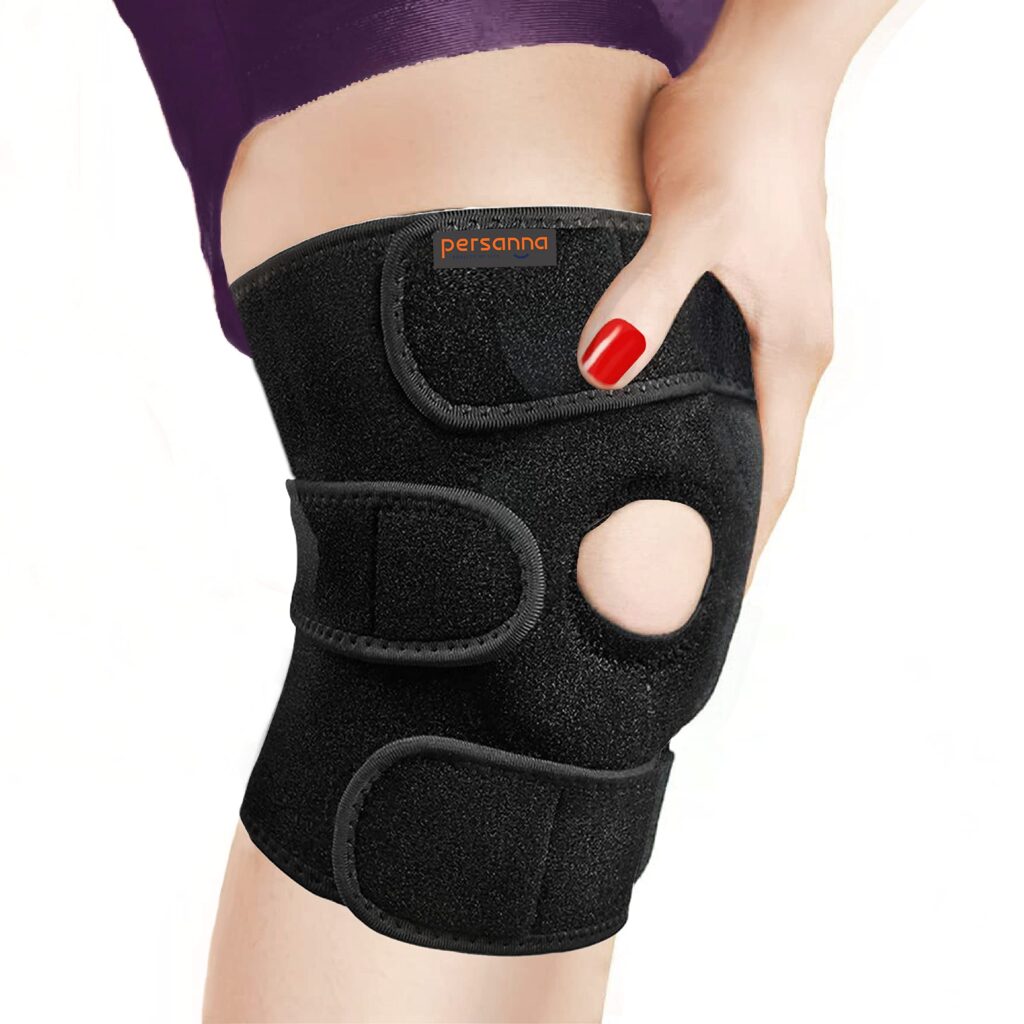
Choosing the Right Knee Brace
Factors to Consider
Choosing the right knee brace is crucial to ensure optimal support and comfort. When selecting a knee brace, consider the following factors:
-
Type of Injury: Determine the type and severity of your knee injury or condition to select a brace specifically designed for that purpose. Different braces offer varying levels of support and stability.
-
Fit and Comfort: Ensure that the knee brace fits properly and feels comfortable when worn. It should neither be too tight nor too loose, as improper fit can lead to discomfort, chafing, or decreased effectiveness.
-
Level of Support: Assess the level of support required for your specific injury or activity. Prophylactic braces generally provide moderate support, while functional or rehabilitative braces offer higher levels of support for injured knees.
-
Materials and Design: Consider the materials used in the brace and their durability. Additionally, evaluate the design features such as open patella, hinges, straps, and closures to determine if they will suit your needs and preferences.
Consulting a Professional
If you are unsure about which knee brace to choose, it is advisable to consult a healthcare professional, such as a physical therapist or orthopedic specialist. They can assess your specific needs and recommend the most appropriate knee brace for your condition or injury. A professional can also guide you on how to properly wear and use the brace for maximum effectiveness.
Using Knee Braces Correctly
Proper Techniques for Putting on Knee Braces
Using knee braces correctly is essential to ensure optimal support and functionality. Follow these steps to put on a knee brace properly:
-
Clean the Knee Area: Before putting on the brace, clean the knee area to remove any dirt, oil, or sweat that may affect the adhesion or fit of the brace.
-
Align the Brace: Start by aligning the brace with the front of your knee, ensuring that the hinges (if applicable) align with the sides of the knee joint.
-
Secure the Straps: Secure the straps or closures of the brace, starting from the bottom and working your way up. Adjust the straps to achieve a snug fit, ensuring that the brace is comfortably in place.
-
Check the Fit: After securing the brace, check for any discomfort, tightness, or areas of excessive pressure. Make sure the brace does not restrict your range of motion or cause any skin irritation.
Maintaining an Active Lifestyle with Knee Braces
Wearing knee braces does not mean you have to give up an active lifestyle. In fact, knee braces can help support and protect your knee joint while engaging in physical activities. Here are some tips for maintaining an active lifestyle with knee braces:
-
Ease into Activities: If you are recovering from a knee injury, start with low-impact activities and gradually increase intensity as your knee strengthens. This will allow your knee to adapt to the brace and reduce the risk of further injury.
-
Choose the Right Activities: Select activities that are suitable for your current condition and do not put excessive stress on the knee joint. Low-impact exercises such as swimming, cycling, or using an elliptical machine can be beneficial for knee health.
-
Warm Up and Stretch: Prior to physical activities, warm up your muscles and perform stretching exercises to prepare your knee joint for movement. This can help reduce the risk of strain and enhance overall flexibility.
-
Listen to Your Body: Pay attention to any discomfort, pain, or swelling during and after activities. If you experience any unusual symptoms, reduce the intensity or duration of your activities and consult a healthcare professional if necessary.
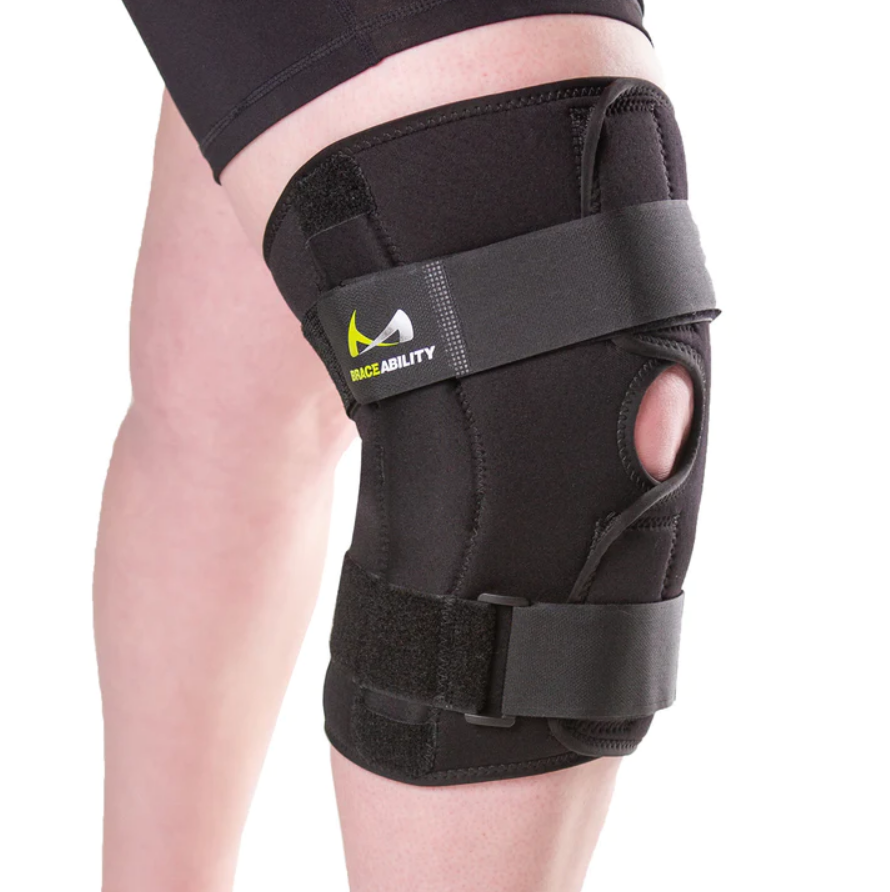
Exercises to Strengthen the Knee
Effective Knee Strengthening Exercises
Strengthening the muscles around the knee joint is essential for maintaining its stability and preventing injuries. Here are some effective knee strengthening exercises:
-
Quadriceps Sets: Sit on the floor with your legs extended in front of you. Contract your quadriceps muscles by pressing the back of your knee into the floor. Hold for a few seconds, then relax. Repeat 10-15 times.
-
Straight Leg Raises: Lie on your back with one leg bent and the other leg extended straight. Keeping the extended leg straight, raise it off the floor to hip level. Hold for a few seconds, then slowly lower it back down. Repeat 10-15 times on each leg.
-
Hamstring Curls: Stand with your feet hip-width apart, holding onto a chair or wall for support. Bend one knee, bringing your heel towards your glutes. Hold for a few seconds, then slowly lower your foot back down. Repeat 10-15 times on each leg.
-
Step-Ups: Using a sturdy step or platform, step one foot onto the elevated surface, then bring the other foot up to meet it. Step back down with one foot at a time. Repeat 10-15 times on each leg.
Incorporating Knee Braces in Exercise Routine
If you wear a knee brace during exercise, it is essential to choose exercises that are compatible with the brace’s design and fit. The brace should not restrict your range of motion or impede proper alignment. Here are some exercises that can be safely performed while wearing a knee brace:
-
Swimming: Swimming is a low-impact exercise that can be beneficial for knee health while wearing a knee brace. It provides a full-body workout without placing excessive strain on the knee joint.
-
Cycling: Cycling on a stationary bike or using a regular bicycle can be an excellent option for individuals with knee braces. It is a low-impact exercise that helps strengthen the muscles around the knee while promoting joint stability.
-
Resistance Training: Engaging in resistance training exercises that target the upper body and core can be a safe and effective option while wearing a knee brace. Examples include lifting weights, using resistance bands, or performing bodyweight exercises such as push-ups and planks.
-
Yoga and Pilates: Yoga and Pilates can be beneficial for individuals with knee braces as they focus on gentle movements, stretching, and strengthening. Look for classes or modifications that cater to individuals with knee injuries or limitations.
Taking Care of Your Knee Braces
Cleaning and Maintenance
Proper care and maintenance of your knee braces are essential for their longevity and functionality. Here are some tips for cleaning and maintaining your knee braces:
-
Follow Manufacturer’s Instructions: Read and follow the specific cleaning and maintenance instructions provided by the manufacturer of your knee brace. Different materials and designs may require different care.
-
Hand Wash: If hand washing is recommended, gently clean the brace with mild soap and lukewarm water. Do not use harsh chemicals or bleach, as they may damage the brace’s materials.
-
Allow to Air Dry: After washing, allow your knee brace to air dry completely before using or storing. Avoid placing it in direct sunlight or using heat sources, as these can deform or damage the brace.
-
Inspect for Damage: Regularly inspect your knee brace for any signs of wear and tear, loose stitches, or damage. If any damage is detected, consult with the manufacturer or a healthcare professional for repair or replacement.
Replacing Worn out Knee Braces
Knee braces, like any other orthopedic device, have a limited lifespan. Over time, repeated use, stretching, and natural wear can lead to a decrease in the brace’s support and functionality. It is important to replace worn-out knee braces to ensure optimal support and protection. Here are some signs that indicate it may be time to replace your knee brace:
-
Loss of Elasticity: If your knee brace has become loose or loses its original shape, it may no longer provide the necessary support. Elasticity loss is a common sign that the brace is worn out and needs replacement.
-
Visible Wear and Tear: Look for visible signs of wear, such as frayed edges, stretched-out straps, or a peeling surface. Such signs indicate that the brace’s materials are deteriorating and may compromise its functionality.
-
Decreased Effectiveness: If you notice that your knee brace no longer provides the same level of support or pain relief, it may be due to its compromised condition. A worn-out brace may not effectively fulfill its intended purpose and should be replaced.
-
Change in Fit or Comfort: If your knee brace consistently feels uncomfortable, too tight, or slips out of place despite proper adjustments, it may be an indication that it needs replacement.
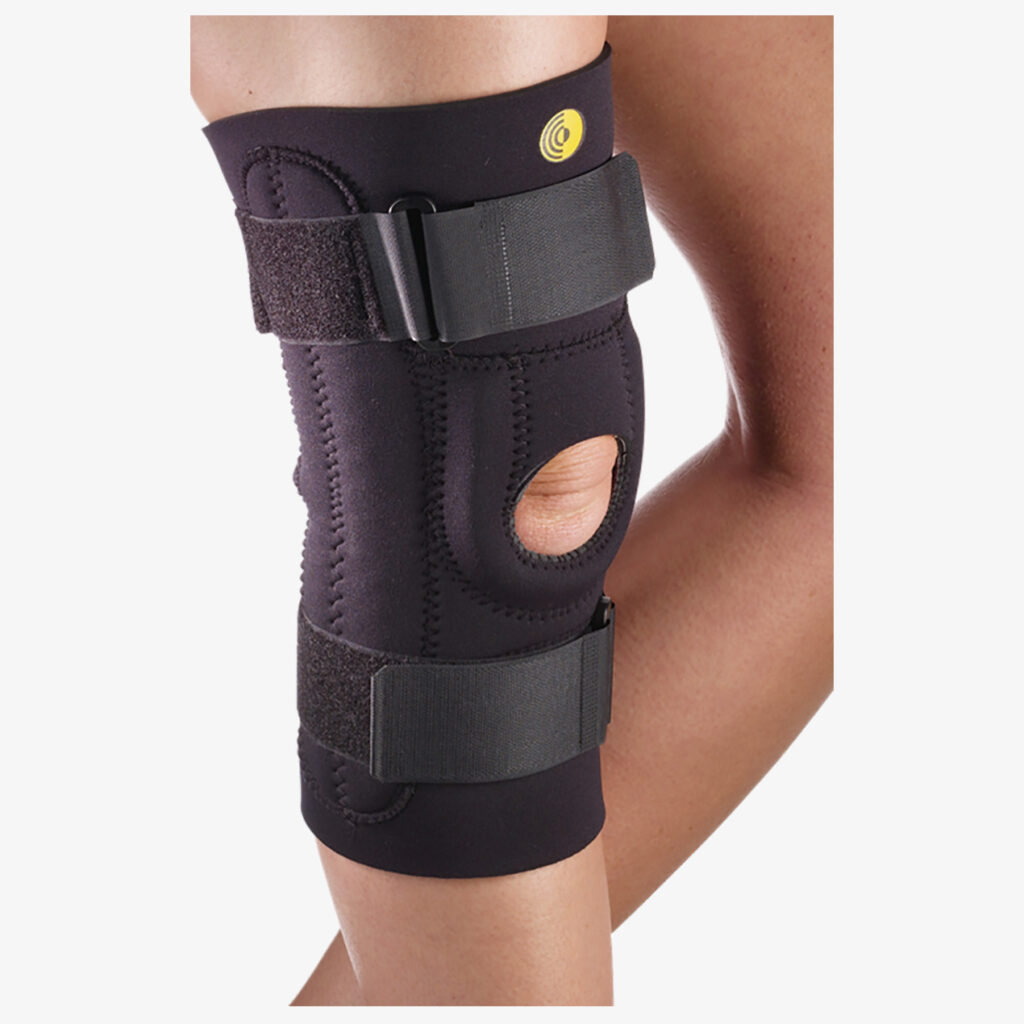
Tips for Comfortable Use of Knee Braces
Wearing the Brace for the Right Duration
Wearing your knee brace for the appropriate duration is crucial to ensure its effectiveness and maintain comfort. While it is essential to wear the brace during activities that put stress on the knee joint, it is equally important to allow your knee some time without the brace. Here are some tips for comfortable use of knee braces:
-
Follow Healthcare Professional’s Recommendations: Consult with a healthcare professional about the recommended duration for wearing your knee brace. They can provide guidance based on your specific condition or injury.
-
Gradually Increase Wear Time: If you are recovering from a knee injury or surgery, start by wearing the brace for shorter periods and gradually increase the duration as your knee strengthens and heals. This allows your knee to adapt and prevents discomfort from prolonged use.
-
Take Breaks: Allow your knee to rest and breathe by removing the brace for short breaks, especially during prolonged activities or if you experience discomfort. This can help reduce pressure points, prevent skin irritation, and provide relief.
-
Remove Before Bed: Unless otherwise advised by your healthcare professional, remove your knee brace before going to bed. This allows your knee to rest and recover during sleep.
Avoiding Skin Irritation
Skin irritation and discomfort can occur when wearing knee braces for extended periods or due to friction between the brace and the skin. To avoid skin irritation, follow these tips:
-
Clean the Brace Regularly: Regularly clean your knee brace to remove any sweat, dirt, or bacteria that can contribute to skin irritation. Cleanliness plays a crucial role in maintaining healthy skin while wearing a brace.
-
Moisturize the Skin: Apply a hypoallergenic moisturizer or lotion to your knee before putting on the brace. This can help reduce friction and protect the skin from potential irritation.
-
Wear a Thin Layer: Consider wearing a thin, breathable layer of clothing between your skin and the brace. This can act as a buffer, reducing friction and providing an additional layer of protection.
-
Monitor for Signs of Irritation: Regularly check your skin for any signs of redness, itching, or rash. If you notice any skin irritations, remove the brace and consult with a healthcare professional for appropriate management.
Common Misconceptions about Knee Braces
Knee Braces Making the Knee Weaker
One common misconception about knee braces is that they make the knee weaker by providing excessive support and reducing the muscles’ workload. However, knee braces are designed to enhance the strength and stability of the knee joint, not weaken it. They provide external support while allowing the muscles to function and engage in their natural movement patterns. In fact, knee braces can assist in muscle activation and proprioceptive feedback, which ultimately help strengthen the knee and contribute to overall joint stability.
All Knee Braces are Expensive
Another common misconception is that all knee braces are expensive. While some knee braces may come with a higher price tag due to advanced features, materials, or specialized designs, there are plenty of affordable options available. Depending on the purpose and level of support required, there are knee braces to fit various budgets. It is important to research and consider factors such as fit, functionality, and durability rather than solely focusing on price when choosing a knee brace that suits your needs.
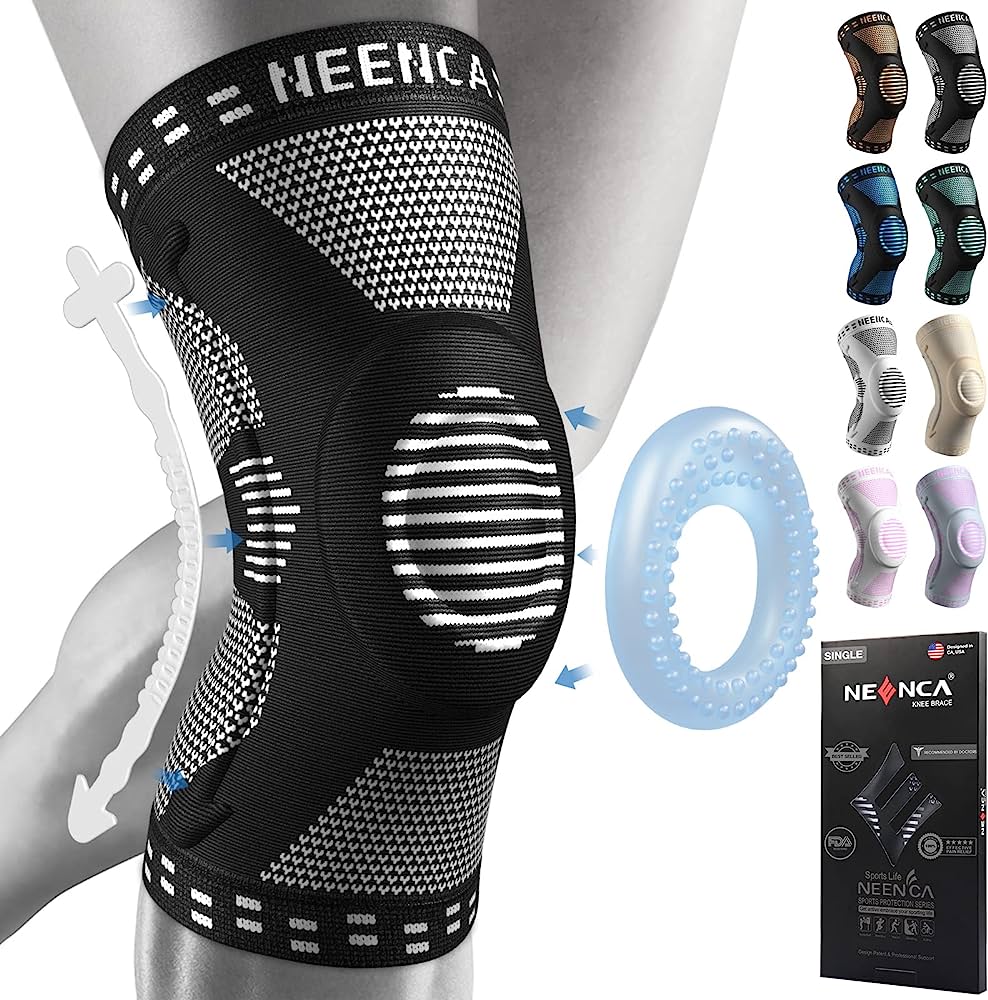
Risks and Precautions of Using Knee Braces
Knowing the Limitations of Knee Braces
While knee braces can provide valuable support and stability, it is important to understand their limitations. Knee braces are not a substitute for proper medical evaluation, diagnosis, and treatment. They should not be used as a standalone solution for severe injuries, degenerative conditions, or chronic pain. It is important to consult with a healthcare professional to determine if a knee brace is appropriate for your specific condition and to discuss any potential risks or limitations associated with its use.
Consulting a Doctor for Proper Advice
If you have a knee injury or knee pain that persists or worsens despite the use of a knee brace, it is advisable to consult a healthcare professional. They can properly diagnose the underlying cause, provide targeted treatment options, and recommend appropriate interventions to address your specific needs. In some cases, surgery or other forms of treatment may be necessary, and a healthcare professional can guide you in making informed decisions regarding your knee health.
Conclusion
Knee braces can be a valuable tool in supporting and maintaining the health of your knee joint. By providing stability, reducing pain, and aiding in recovery, knee braces can contribute to a pain-free and active lifestyle. Understanding the different types of knee braces, their benefits, proper usage, and maintenance are essential for maximizing their effectiveness. However, it is important to keep in mind that knee braces are not a one-size-fits-all solution and should be used in conjunction with proper medical advice and treatment. By taking proper care of your knee braces, selecting the right brace for your needs, and incorporating strengthening exercises, you can brace yourself for a pain-free life and enjoy a higher quality of movement and activity.
